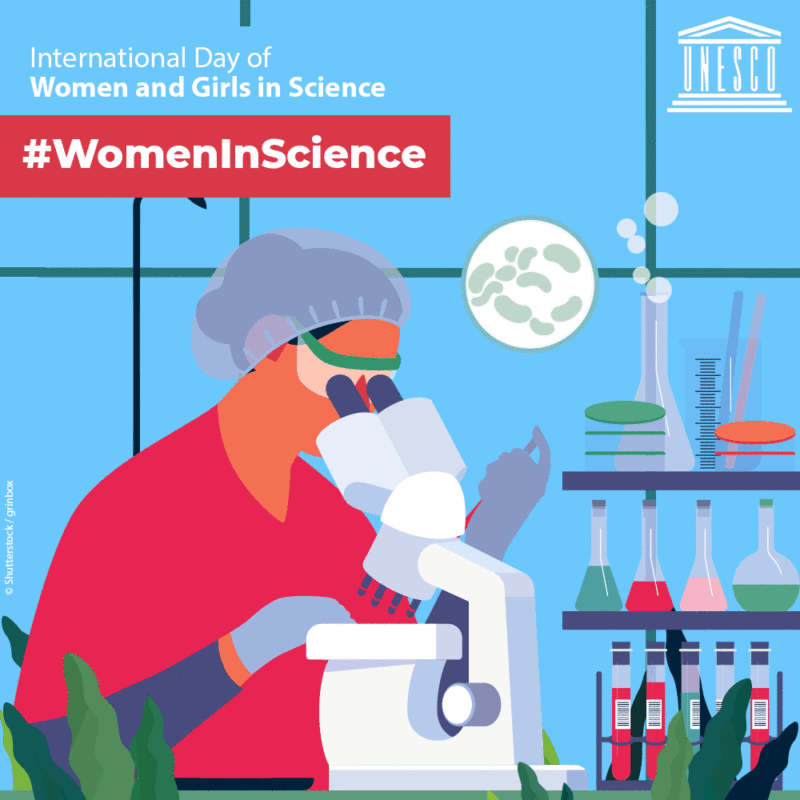3 Pathways to Accelerating Women’s Contributions in Science
Nathan Associates, Inc. is part of Cadmus. Original publication date: August 5, 2022.
By Caroline Rubin, Technical Director, Economic Engagement and Private Sector Development
The world marked the 8th celebration of the International Day of Women and Girls in Science this past weekend, and it’s a great time to reflect on the invaluable contributions and the power of women and girls in science education and the workforce globally.
Women are making their mark in various ways in the science field, from conducting groundbreaking research, to starting businesses and working in government to tackle the world’s biggest science challenges.
Women’s contributions to the science field begin early in life. In 34 of 40 countries included in the 2018 PISA, girls outperformed boys in science, yet fewer women go on to study science and Science, Technology, Engineering, and Math (STEM) more broadly compared to men. This presents a pipeline issue as female science achievement does not translate to science careers—with women comprising only 30% of science researchers globally, mostly concentrated in health and social sciences. Most women in science also hold lower-paying and less stable jobs. This disparity is due to a combination of social norms, gender-based biases, and lack of access to education and opportunities for advanced learning and networking.

For women who transition from science education to the science workforce, they face further challenges, including gender-based discrimination, limited opportunities to fund and publish research, lack of support for advancement, and occupational segregation. Bias and discrimination further exacerbate the already-existing challenges of women working in a field that has long been male-dominated. They can undermine their accomplishments, reduce their chances of being hired or promoted, and limit access to professional development and skill-building opportunities. Despite some policies aimed at mitigating these challenges, such as equal pay for work or equal value and anti-discrimination measures in employment, there are still systemic and structural barriers that hinder women from pursuing careers in science, such as gender-blind policies, unavailability of gender-disaggregated data, and lack of coordination among stakeholders.
To overcome these challenges, Nathan’s programs have advanced women’s entry, retention, and advancement in science careers and more broadly, STEM. While science is a major component of STEM, it is often packaged with broader STEM initiatives. Nathan’s STEM programs have strengthened institutions’ ability to facilitate women in science though policy change and engaging the private sector.
Drawing on these experiences, the following are keys to effective programming to facilitate greater participation and advancement of women in science careers:
1—Meaningfully Celebrating and Amplifying Women in Science
Women remain underrepresented in most countries in science careers—not only as researchers but in various roles. Science role models in various careers and positions are important for women and girls to visualize themselves in science careers and access mentoring and networking opportunities. For instance, in Asia, there are fewer female teachers in STEM than other subjects. Programs that spotlight successful women in science at different career stages and in various roles raise awareness, provide role models, demonstrate the breadth of science careers available, and help women and girls understand the unique development pathways within the science field. Start-up pitch and science competitions, such as the Underwriters Laboratories-ASEAN-U.S. Science Prize for Women, implemented by Nathan and partners, provide women with increased visibility and prominence, which can help them expand and create new partnerships, expand their research efforts, and invest in themselves.
2—Cultivating Science Officials and Policymakers
Programs that work directly with government officials and organizations in science are critical for advancing women in science and complement the work by women’s organizations and government agencies. This approach helps ensure that efforts around women in science are not siloed within gender groups but are truly adopted and institutionalized by science officials and policymakers for longstanding change. Working with regional forums, such as the Association of Southeast Asian Nations (ASEAN) and the Asia-Pacific Economic Cooperation (APEC), can maximize impact and bring decision-makers together to achieve full equity for women and girls in science and other STEM fields. Nathan’s development of a policy brief (to be released Spring 2023), a data framework, and principles and actions to advance women and in science have successfully advanced regional policy.
3—Encouraging More and Better Data
There is somewhat of a strong foundation of data around girls’ science education and achievement as well as women’s employment as researchers. Notably, data on women in science is more available and comprehensive than data on women’s involvement in other STEM areas—namely technology, engineering, and math. However, global data covering women’s employment in positions other than researcher and at various levels, including leadership, is largely unavailable or at best, inconsistent. Further, global data measuring gender identity is often binary and other intersectional identities (such as race, ethnicity, and disability status, among others) are largely excluded from datasets. For instance, data on women’s employment in science industries in ILOSTAT (the ILO statistical database) do not disaggregate by location, disability, or age. More and better data is critical for informing and adapting programming and implementing evidence-based programs that can meet the needs and improve participation of all women.
As the world presses forward with innovation and technological advancements to address global challenges, women and girls need to be part of the solutions. Celebrating and highlighting successful women in science, working with institutions and policymakers to drive opportunities for women and girls in science, and generating more and better data to inform evidence-based programming and policy will help achieve this.